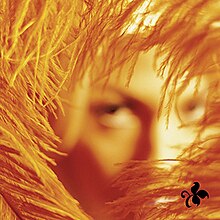Shangri-La Dee Da
| Shangri-La Dee Da | ||||
|---|---|---|---|---|
 |
||||
| Studio album by Stone Temple Pilots | ||||
| Released | June 19, 2001 | |||
| Recorded | 2000 | |||
| Genre | Alternative rock, hard rock, psychedelic rock, power pop | |||
| Length | 47:25 | |||
| Label | Atlantic | |||
| Producer | Brendan O'Brien | |||
| Stone Temple Pilots chronology | ||||
|
||||
| Singles from Shangri-La Dee Da | ||||
|
||||
| Professional ratings | |
|---|---|
| Aggregate scores | |
| Source | Rating |
| Metacritic | (72/100) |
| Review scores | |
| Source | Rating |
| Allmusic | |
| Entertainment Weekly | C+ |
| Mojo | |
| NME | (6/10) |
| PopMatters | |
| Q | |
| Rolling Stone | |
| Yahoo! Music UK | |
Shangri-La Dee Da is the fifth studio album by American hard rock band Stone Temple Pilots. It was produced by Brendan O'Brien and released on June 19, 2001, by Atlantic Records.
Shangri-La Dee Da was originally planned to be a double album dedicated to the memory of Andrew Wood, but the concept was vetoed by Atlantic Records. While recording the album, the band also worked on a documentary and coffee table book. Neither was released, however, and limited footage was made available through the band's official website in the form of live performance-based music videos. Despite not selling as well as previous Stone Temple Pilots albums such as Core, Purple, Tiny Music... Songs from the Vatican Gift Shop, and No. 4, Shangri-La Dee Da was certified Gold by the RIAA and the CRIA and was a commercial success for the band.
In late 2000, lead singer Scott Weiland said that the band planned to record a double album. Shortly after work got underway, bassist Robert DeLeo said that goal looked realistic, stating:
"Scott's in a space right now where we're not cramming to just get a single record done — he's in a space where I think a double record is possible."
The band's label, Atlantic, was hesitant about the idea and the band eventually conceded.
Chapman Baehler filmed a behind-the-scenes documentary as the band recorded the LP in their beach villa-turned-recording studio. According to Baehler, the documentary set out to be like a modern-day version of the 1970 Beatles documentary Let It Be. The film follows the band through preproduction and hammering out new songs to putting the tunes down on tape. Baehler explained that the documentary included beautiful and moody shots with either Dean or Robert playing an old organ in a secluded wing of the villa, Robert and Scott playing "Wonderful" acoustically, and some "totally awesome rock-out live stuff" in the main recording space.
...
Wikipedia
